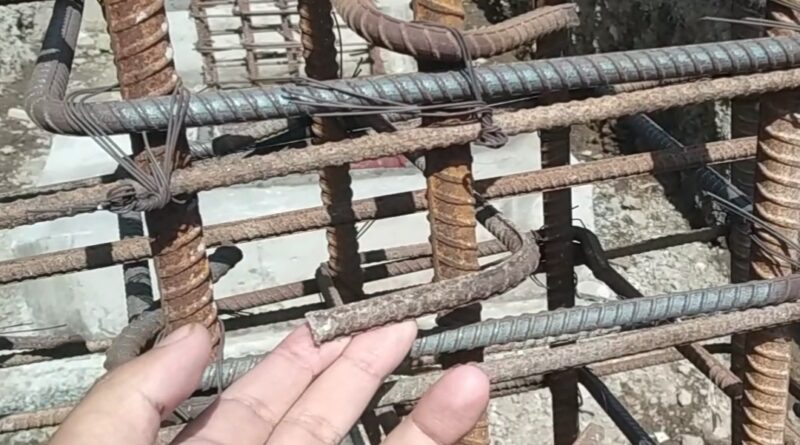How to protect steel from corrosion
Epoxy-coated Reinforcing Bars :-
Precleaned reinforcing bars are protected with a coating of powdered epoxy that’s fusion-bonded to the steel in an assembly line process. Typically, manufacturers have the capability to coat straight bars, but only a few can coat bent bars. The coating physically blocks chloride ions. Performance.
Anti-corrosive Treatment
The Anti corrosive treatment is applied after the rods are cut and bent to shape. Average thickness of coating is 0.2 to 0.4 mm. The procedure for anti-corrosive treatment of reinforcement is as follows:
- The reinforcement rods are dipped in de-rusting solution ( hydro chloric acid plus water ) for about 30 minutes till rusts are removed and bright surface bars are achieved.
- De-rusting solution is prepared by mixing inhibitor-de-rusting solution plus hydro chloric acid plus water; a mix ratio of 5 liters inhibitor: 50-liter hydrochloric acid: 50 liters water can be used for the production of 100 liters of de-rusting solution can be considered.
- Then, remove the bars out of the solution, clean it with wet waste cloth.
- After that, immerse the bars in a solution which is produced by mixing alkaline powder with water ( 1 Kg of powder shall be mixed with 400 Liters of water). The bars should be left in this solution for5 to 10 minutes then cleaned and removed.
- Phosphate Jelly is then immediately applied on the surface of the rods with the help of a fiber brush. The jelly shall be allowed to react with the rod surface for 45-60 minutes and the jelly removed by means of rinsing in water or wet cloth.
- Corrosion inhibitor solution is then applied on the reinforcement surface by brushing/dipping.
- The corrosion inhibitor solution is mixed with ordinary portland cement in the ratio of 500 CC of inhibitor to 1 kg of OPC and a brush able slurry is prepared.
- This slurry is then be applied on the rod surface by brushing. All above steps should be applied in the same day and the steel allowed to air dry for 12 – 24 hours.
- Corrosion sealing solution is then be applied by brushing / dipping
- Inhibitor is mixed with ordinary Portland cement in the ratio of 600 CC of inhibitor to 1 kg. of cement and a brush able slurry is prepared.
- This slurry is immediately applied on the reinforcement surface. The coating is then allowed to dry for 12 – 24 hours.
- Corrosion sealing solution is applied on the reinforcement surface. This coating is again repeated after 4 hours of air drying.
Anti-carbonation Coating
The anti-carbonation coating is formulated to protect reinforced concrete and other masonry cementitious substrate that is directly exposed to atmospheric conditions like UV radiation, high humidity, heavy rain, industrial
As anti-carbonation, protective and decorative coating for bridges, flyovers, subways, underpass, parking garages, tunnels, chimneys, industrial structures, stadiums, and RCC water tanks. Also all concrete structures and cementitious exterior masonry plastered surfaces that are exposed to the extreme atmospheric conditions. Also all thin RCC structures having less cover such as facades, fins are other areas of application of anti-carbonation coating.
Anti-carbonation property mainly depends on barrier property of a coating and also coatings’ permeability or resistance to diffusion to atmospheric CO2 . Possible problems: The coatings of generic base of polyethylene, epoxy, tar epoxy, chlorinated rubber, bituminous, cementitious, silicone and silicate are not suitable for anti carbonation coatings.

